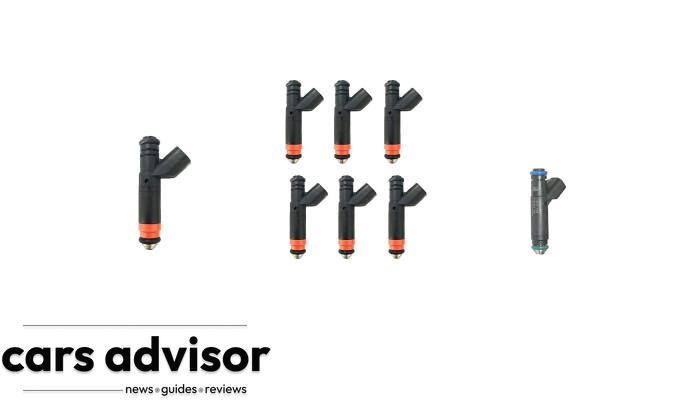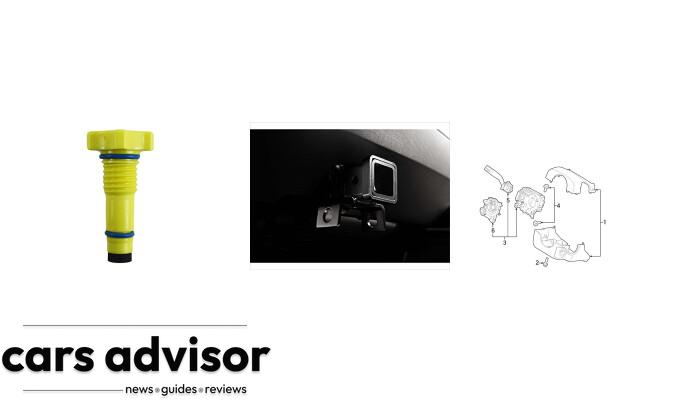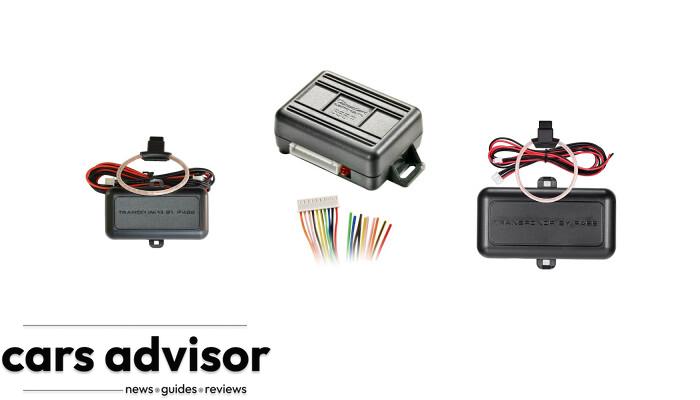Experiencing reduced engine power can be both frustrating and alarming for any car owner, as it may lead to decreased fuel efficiency, poor acceleration, and even safety concerns. In this blog post, we will explore the causes of reduced engine power, factors that affect repair costs, and typical expenses associated with fixing this issue.
We’ll also share some valuable tips for prevention and maintenance to keep your vehicle running at its best. So buckle up as we take a deep dive into understanding the cost of fixing reduced engine power and how you can avoid breaking the bank in the process!
TLDR
1. The cost to replace the accelerator pedal sensor and fix reduced engine power could range from $100 to $500 depending on the model of the car.
2. The reduced power problem is usually minor and costs about $100 to fix.
3. The cost to fix reduced engine power caused by a faulty APP sensor will depend on the price of the part and the difficulty of the repair.
4. The cost of repairing low engine power issues can range from $94.99 to $114.99 for an inspection.
5. The cost of replacing reduced engine power warning ranges widely from $0 to $2,500.
6. The only way to determine the exact cost of fixing reduced engine power warning is to diagnose the issue.
7. It can cost around $500 for parts and labour if you need a new throttle body, position sensor, or other similar parts.
8. It is not safe to drive with reduced engine power, and it is necessary to get it fixed immediately.
9. The reduced engine power light can come on and go off intermittently.
10. It is possible to reset the reduced engine power light, but it is essential to diagnose and fix the underlying issue first.
Understanding Reduced Engine Power
Reduced engine power refers to a warning that appears on the dashboard when a car’s performance is compromised due to one or more underlying issues.
Definition And Symptoms
Reduced engine power, also known as “limp mode” or “reduced power mode,” is a safety feature deployed by a vehicle’s Engine Control Module (ECM) to protect the engine and transmission from further damage when it detects an issue that could compromise performance or longevity. In this state, the ECM limits the amount of power available to the driver, causing a significant decrease in acceleration and overall responsiveness.
Symptoms of reduced engine power can manifest in various ways but are primarily characterized by sluggish acceleration, decreased top speed, and decreased fuel efficiency. Other possible symptoms include sudden jerking movements while driving, misfires with noticeable vibrations, and illuminated check engine or warning lights on your dashboard. Reduced engine power might occur intermittently or persist until professional repairs have been made – either way; it is essential to diagnose and address these issues promptly for continued safe operation of your vehicle.
Common Causes Of Reduced Engine Power
Reduced engine power can be caused by a variety of issues. Here are some common causes:
- Clogged air filter: A dirty air filter can reduce the airflow to the engine, resulting in reduced power.
- Fuel system issues: Any problem with the fuel system, such as a clogged fuel filter or faulty fuel pump, can also lead to low engine power.
- Ignition system problems: Spark plugs that are worn out or damaged can cause misfires, which in turn reduces engine power.
- Exhaust system problems: A blockage in the exhaust system or a faulty catalytic converter can cause reduced power and performance.
- Throttle body issues: If the throttle body is dirty or faulty, it may not allow sufficient air into the engine, leading to low power output.
- Transmission issues: Automatic transmission problems such as slipping gears or failing solenoids can cause reduced engine power.
- Electrical system problems: Malfunctioning sensors or wiring issues in the electrical system can cause reduced power and other engine performance issues.
- Overheating: If an engine overheats for any reason, it may reduce its own performance to prevent further damage.
Factors That Affect The Cost Of Fixing Reduced Engine Power
The severity of the issue, type of vehicle, location and reputation of repair shop, as well as DIY vs professional repair are all factors that can affect the cost of fixing reduced engine power – keep reading to learn more about how each one impacts your wallet.
Severity Of The Issue
The severity of the reduced engine power issue is a critical factor that affects its repair cost. Generally, if the problem is minor, such as a clogged air filter or faulty spark plug, it will likely be less expensive to fix. However, if the issue is more severe and requires significant repairs or replacement parts like catalytic converters, oxygen sensors, or mass airflow sensors, then the costs can add up quickly.
For example, suppose your car’s reduced engine power warning lights come on due to an underlying serious issue like transmission failure or suspension problems. In that case, you should expect to pay several thousand dollars to get it fixed correctly. Remember that delaying repairs can lead to more severe problems and higher repair costs in the long run.
Ultimately, whether you opt for DIY repairs or professional help will depend on how severe the problem is and how comfortable you are handling complex automotive diagnostics and mechanical repairs. Always prioritize your driving safety by getting any reduced engine power issues diagnosed promptly by a qualified mechanic to avoid any further complications down the road.
Type Of Vehicle
The type of vehicle is a crucial factor when it comes to fixing reduced engine power. The cost of repairs can vary significantly depending on the make and model of your car. For instance, repairing reduced engine power in a GMC Yukon may require more specialized knowledge and parts than fixing a similar issue in a Toyota Corolla. Luxury cars such as BMWs or Mercedes-Benz often have higher costs associated with repairs due to their complex systems.
Additionally, automatic transmission vehicles tend to have higher repair costs than those with manual transmissions since the former often requires more intricate diagnostic testing. Lastly, older cars may be more costly to fix than newer ones because they may need additional replacements or upgrades beyond just fixing the immediate issue.
It’s essential to keep these factors in mind when considering the cost of fixing reduced engine power for your specific vehicle. Consulting with an experienced mechanic who specializes in your car’s make and model can help you gain insight into potential repair costs and come up with an effective maintenance plan that fits your budget.
Location And Reputation Of Repair Shop
The location and reputation of the repair shop can significantly affect the cost of fixing reduced engine power. A highly reputable auto repair shop in a well-to-do area might charge more than a lesser-known shop in an economically disadvantaged neighborhood, though this varies from place to place. In some cases, you may find shops that offer lower prices due to their location or lack of branding.
Regardless of the cost, it is essential to choose a reliable repair shop with knowledgeable technicians who specialize in your car model. You should check reviews online before trusting any workshop with your vehicle repairs. It is also worth considering referrals from friends or family members who have had similar issues fixed successfully at specific locations. By doing thorough research on location and reputation beforehand, you can ensure that you get quality service without breaking the bank while keeping drive safety paramount.
DIY Vs Professional Repair
When it comes to fixing reduced engine power, there are two options: DIY or professional repair. While attempting a DIY repair may seem like a cost-effective solution, it can actually end up being more expensive in the long run. If you don’t have the necessary experience and tools, you could potentially cause more damage to your vehicle.
On the other hand, getting professional repairs done by an experienced mechanic ensures that your car is fixed correctly without any further complications. They have access to specialized diagnostic equipment and parts that are needed for proper repairs. The cost of professional repairs will depend on the severity of the issue, type of vehicle, location and reputation of the repair shop, and labor costs.
It’s important to weigh out both options carefully before deciding on which route to take. In some cases where only minor issues need attention such as replacing air filters or spark plugs then DIY can be a good option but when tackling severe cases where replacement part is involved then taking help from professionals is always better than making things worse leading into bigger problems.
Typical Costs Of Fixing Reduced Engine Power
The typical costs of fixing reduced engine power vary depending on the severity of the issue and the specific parts that need to be replaced, including air filters, fuel filters, spark plugs, oxygen sensors, mass airflow sensors, catalytic converters, and labor costs.
Air Filters, Fuel Filters, And Spark Plugs
Air filters, fuel filters, and spark plugs are crucial components that can impact engine power. Here’s what you need to know about fixing reduced engine power in these areas:
- Air Filters: A dirty air filter can limit the airflow into the engine and cause a reduction in power. The cost of replacing an air filter is typically around $20 to $50. However, if you DIY, it will cost less.
- Fuel Filters: A clogged fuel filter can also lead to reduced engine power by restricting the flow of fuel to the engine. Depending on your vehicle’s make and model, fuel filters’ prices range from $15 to $60.
- Spark Plugs: If your spark plugs are faulty or worn out, they can’t ignite the fuel mixture correctly in the combustion chamber, resulting in low engine power. The price of replacing spark plugs averages between $100 and $200.
Regular maintenance and inspection of these components are essential for preventing reduced engine power issues caused by dirty or worn-out parts. By keeping up with replacing necessary parts regularly, you can save on costly repairs down the road while maximizing your car’s performance.
Oxygen Sensors And Mass Airflow Sensors
Oxygen sensors and mass airflow sensors are two critical components that impact engine performance. These are the essential details to know about repairing reduced engine power issues caused by these parts:
- Oxygen sensors work to monitor the amount of oxygen in the exhaust gases to ensure optimal fuel efficiency. If they malfunction, the vehicle may experience a decrease in engine performance and increased emissions.
- The cost of replacing an oxygen sensor can range from $100 to $250, depending on the make and model of your car.
- Mass airflow sensors measure how much air is entering the engine and adjust fuel injection accordingly. When they fail or get dirty, this can cause reduced acceleration and power issues.
- Replacing mass airflow sensors can cost between $100-$300 depending on the type of vehicle you have.
- Regular maintenance and inspection can help prevent issues with these important engine components, ultimately saving you money in repair costs down the line.
- Keeping an eye on these critical sensors and getting them fixed as soon as possible will help ensure your vehicle stays running smoothly for years to come.
Catalytic Converters
Catalytic converters can be a common culprit in cases of reduced engine power. Here are some important things to know about them when it comes to repair costs:
- The cost of replacing a catalytic converter can range from $1,000 to $2,500 depending on the make and model of the vehicle.
- A failed catalytic converter can cause reduced engine power and trigger warning lights on the dashboard.
- In some cases, a clogged catalytic converter can cause engine overheating and damage other components.
- Regular maintenance, such as cleaning or replacing air filters, can help prevent premature failure of the catalytic converter.
- It is important to use high-quality fuel and avoid overloading your vehicle to minimize wear and tear on the catalytic converter.
Labor Costs
Labor costs play a significant role in the total expense of fixing reduced engine power. Depending on the complexity of the repair, the location, and the reputation of the repair shop, labor costs can vary greatly. The table below outlines the potential labor costs for common repairs associated with reduced engine power.
| Repair | Average Labor Cost |
|---|---|
| Accelerator Pedal Sensor Replacement | $70-$100 |
| Throttle Body Replacement | $100-$200 |
| Oxygen Sensor Replacement | $50-$150 |
| Mass Airflow Sensor Replacement | $70-$100 |
| Catalytic Converter Replacement | $150-$400 |
It’s important to note that these labor costs are just estimates and can vary based on various factors. Additionally, labor costs do not include the expense of the parts required for the repair. Always consult with a trusted mechanic or repair shop to receive an accurate quote for labor costs related to fixing reduced engine power.
Prevention And Maintenance Tips
To avoid reduced engine power issues, it’s crucial to maintain and inspect your vehicle regularly, keep the fuel system clean, replace necessary parts, and avoid overworking your engine. Read on for more helpful tips on how to prevent costly repairs and ensure optimal performance of your vehicle.
Regular Maintenance And Inspection
Regular maintenance and inspection are crucial in preventing reduced engine power issues. A well-maintained vehicle is less likely to experience sudden mechanical failure than a poorly maintained one. Regular oil changes, for example, keep the engine lubricated and operating smoothly. In addition, replacing air filters regularly helps prevent dirt and debris from clogging the engine’s airflow system.
It is also essential to inspect key components of your vehicle periodically to identify any potential problems early on. Checking the spark plugs, belts, hoses, and other parts can help you catch issues before they turn into bigger problems requiring more extensive repairs down the road. Routine inspections by a qualified mechanic can provide peace of mind that your vehicle is in good condition and safe to drive.
By keeping up with regular maintenance and inspections on your vehicle, you can avoid costly repairs caused by neglecting important tasks like changing fluids or identifying worn-out parts before they cause significant damage. These simple steps will ensure that your car stays running smoothly for years to come while reducing the chances of experiencing reduced engine power warning light or other performance issues occurring unexpectedly while driving.
Keeping The Fuel System Clean
Regular cleaning of the fuel system is crucial when it comes to maintaining engine power and overall vehicle performance. Dirty fuel injectors, clogged filters, and contaminated gas tanks can all cause a reduction in engine power. One way to keep the fuel system clean is by using a high-quality fuel injector cleaner regularly. These cleaners contain detergents that break up any accumulated dirt or debris inside the injectors.
Another effective way to maintain your fuel system’s cleanliness is by changing your fuel filter on time. Fuel filters help prevent unwanted particles from entering the engine and causing damage or reduced performance. A clogged filter will restrict fuel flow and decrease engine power output over time. It is advisable to change your car’s fuel filter every 30,000 miles or as recommended by your manufacturer’s guidelines.
In conclusion, taking care of your vehicle’s cleanliness should not be overlooked as it affects its overall health and longevity. Regular maintenance such as keeping the fuel system clean goes a long way in preventing issues like reduced engine power and helps you save money on costly repairs down the line.
Replacing Necessary Parts Regularly
One of the best ways to prevent reduced engine power is by replacing necessary parts regularly. This includes air filters, fuel filters, and spark plugs. Air filters help keep dirt and debris from entering your engine, while fuel filters ensure clean gas gets to your engine. Spark plugs are vital for ignition and combustion processes in your engine.
Not replacing these parts can lead to reduced performance and an increased risk of other issues that can be even more costly to fix. For example, a dirty air filter can cause problems with the mass airflow sensor or throttle body, which are much more expensive to replace than an air filter itself.
By staying on top of regular maintenance tasks like these, you can avoid many unnecessary repair costs down the road. In fact, some experts estimate that proper maintenance could save you as much as 25% on repairs over the life of your vehicle!
Avoiding Overworking Your Engine
To avoid reduced engine power, it’s essential to prevent overworking your engine. Overworking your engine can lead to overheating and damage that may significantly impact its performance. It is necessary to take care of the fuel system, air filters, and oil changes regularly to ensure that the engine works efficiently.
It’s also crucial to understand the limits of your vehicle and not push it beyond them. Avoid rapidly accelerating or pressing down hard on the accelerator pedal as this adds excessive load on the engine. Similarly, if you drive in hilly areas frequently or tow heavy loads often, you should invest in a more robust car with a powerful engine; this will reduce strain on your car’s motor and internal components.
By avoiding these habits collectively, you’ll keep your car running smoothly for longer without needing expensive repairs relating to low-engine-power problems caused by overworking an old or damaged motor.
Conclusion And Final Thoughts
Reduced engine power can be alarming, and the cost of fixing it may vary depending on several factors. Whether you drive a GMC Yukon or any other vehicle, regular maintenance and inspection are essential to avoid costly repairs.
Keeping your fuel system clean and replacing necessary parts regularly are also important to prevent reduced engine power issues. Driving with low engine power is unsafe, so don’t hesitate to seek professional help immediately.
Remember that diagnosing the issue is crucial before resetting any warning lights. Proper care and attention allow you to keep your car running smoothly without breaking the bank on costly repairs!





















